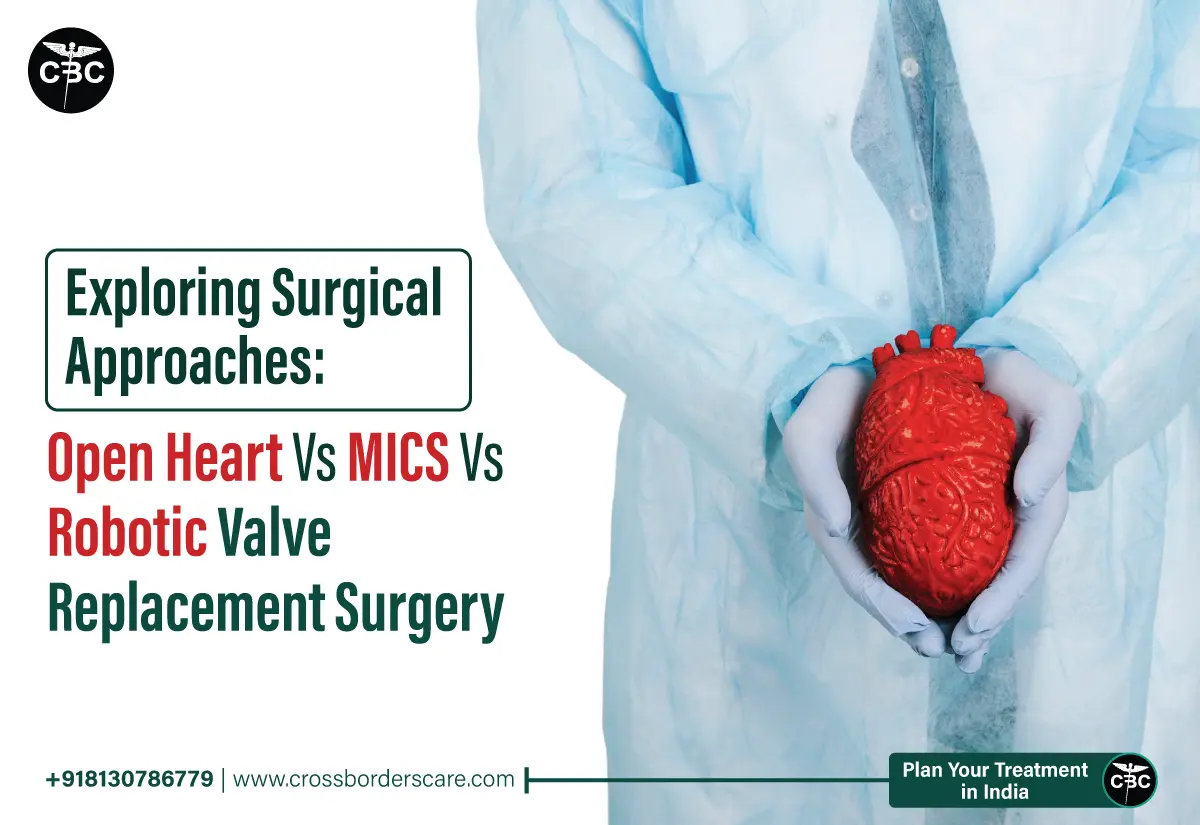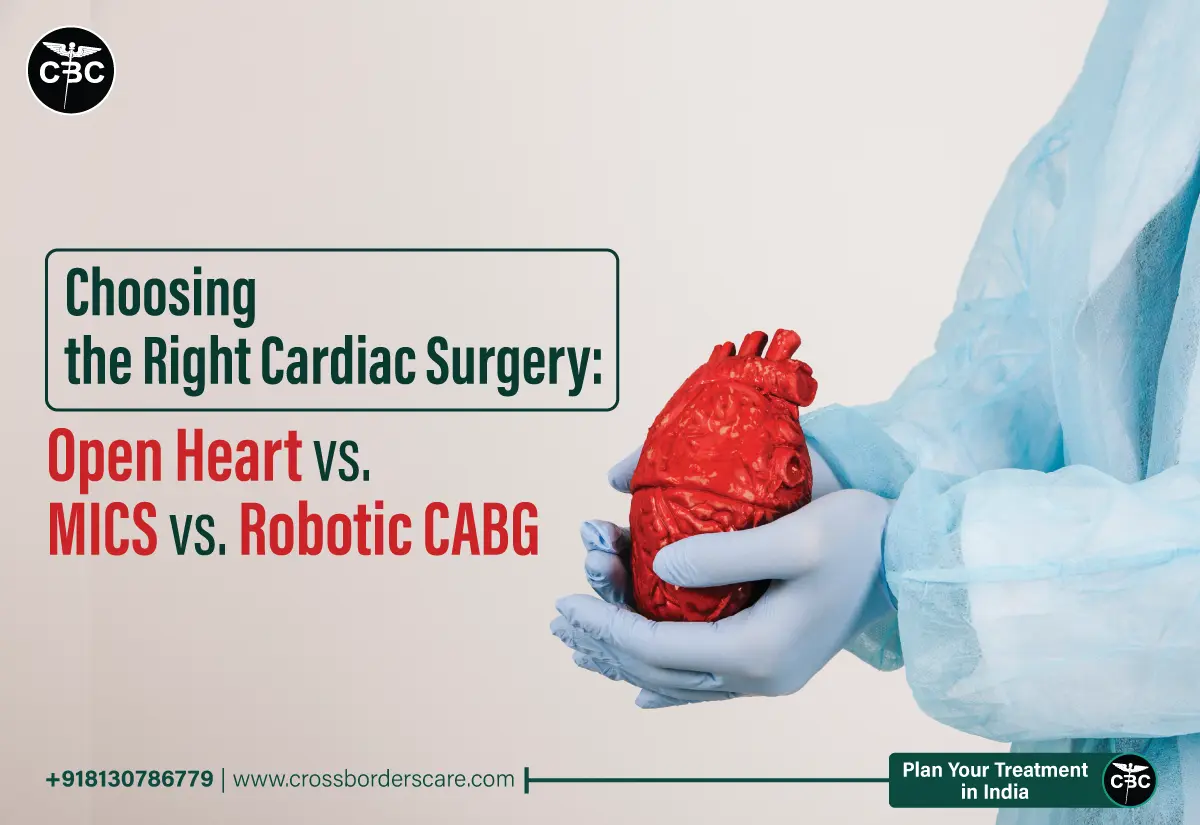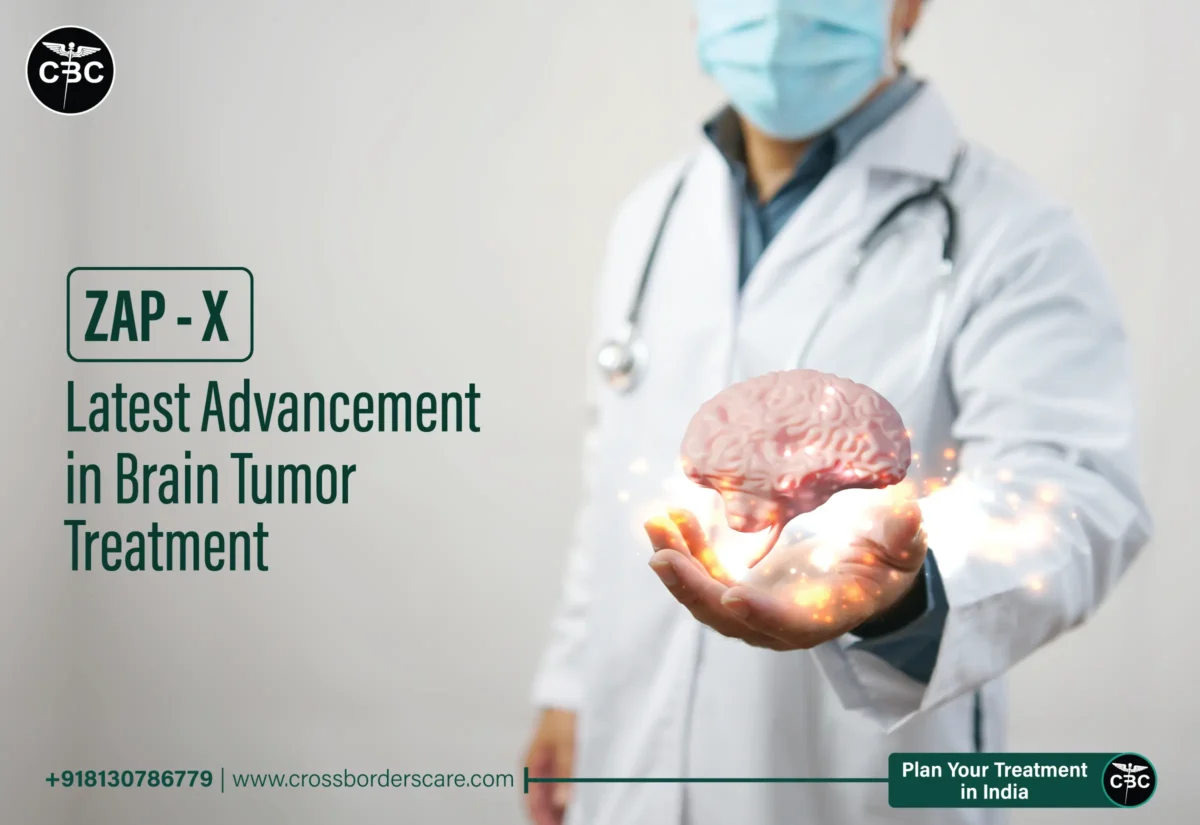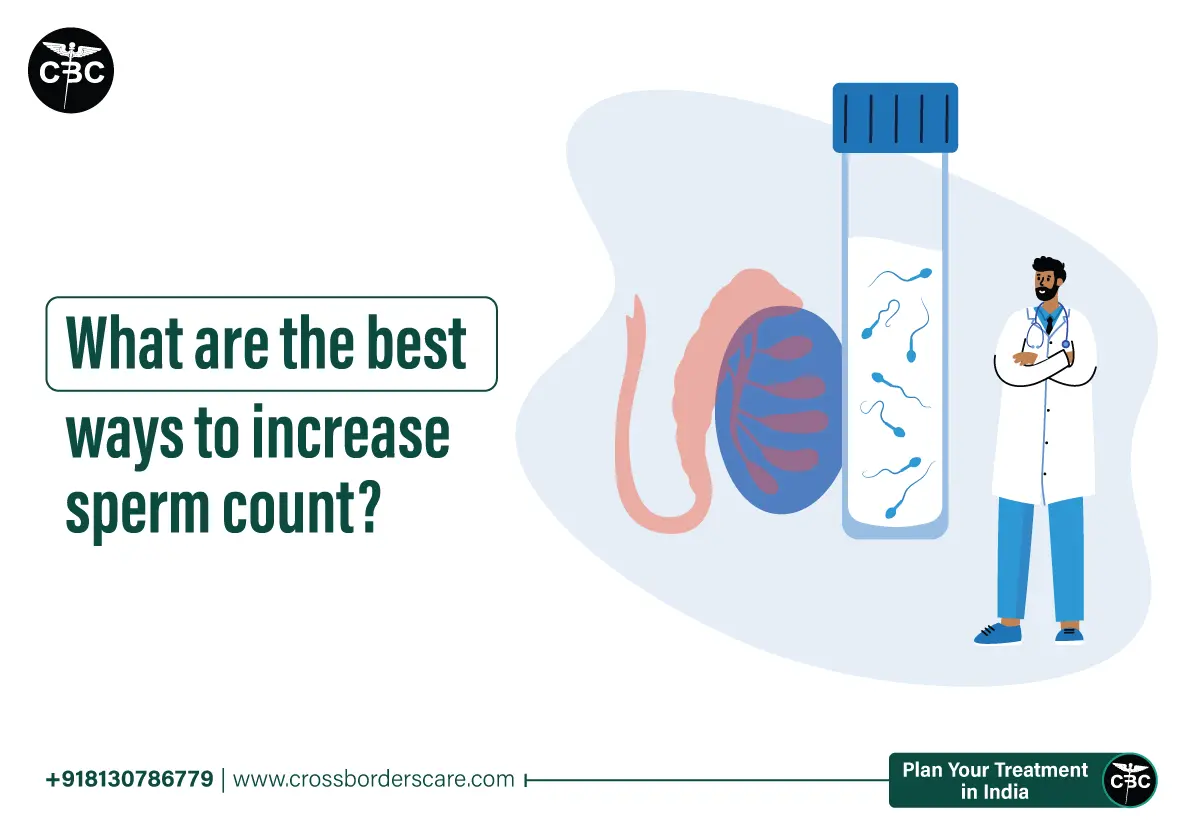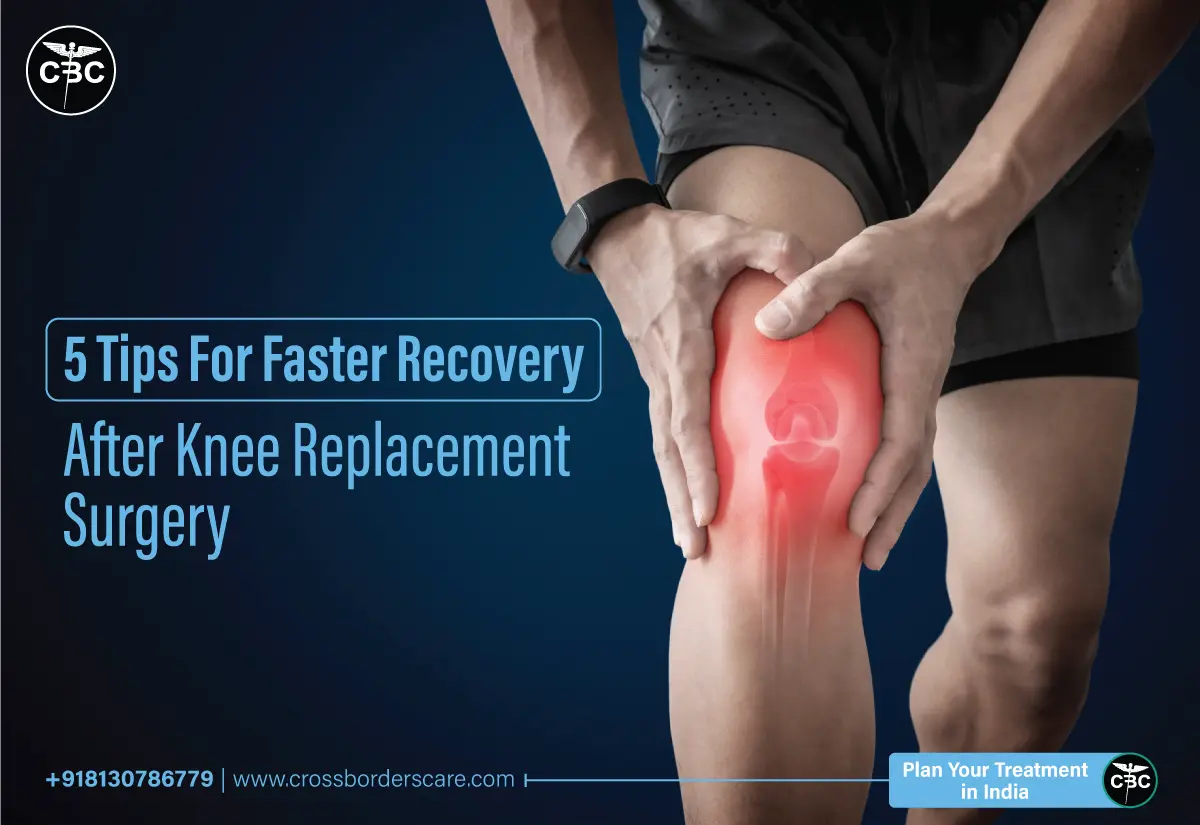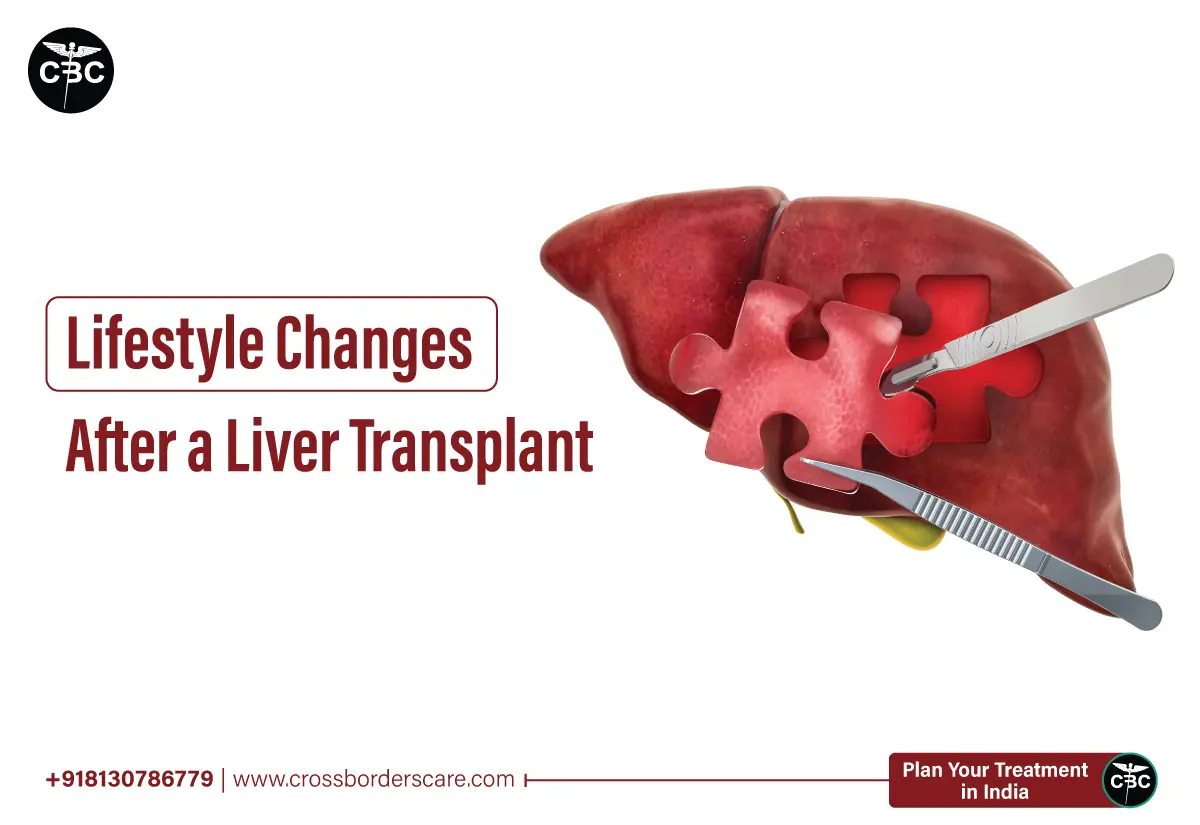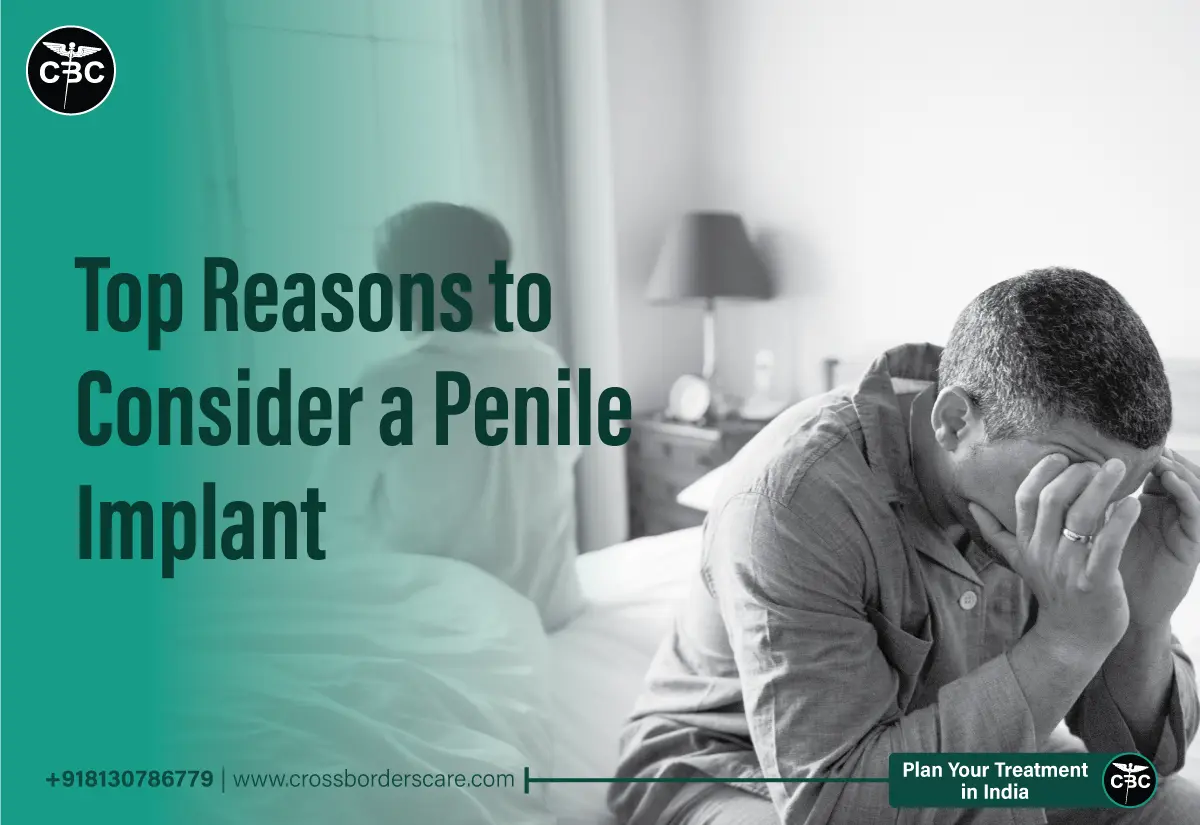Do you know that the correct cardiac surgical procedure leads to faster recovery and significantly improves your quality of life? It also brings significant financial benefits in the form of shorter hospital stays. But when it comes to critical surgical procedures such as heart valve replacement, the life of your loved one is at stake. Therefore, it becomes vital for you to have a deep knowledge of these procedures. Understanding the differences in the procedure will boost your confidence and involve you in your healthcare decisions. Also, it will help you know what to expect before, during, and after the surgery.
This article will help you understand the difference between open heart valve replacement surgery (Sternotomy), MICS valve replacement surgery, and robotic valve replacement surgery in detail. So, without any ado, let us understand each procedure in detail so that you can make informed decisions.
Open Heart Valve Replacement Surgery (Sternotomy)
The most conventional method used for valve replacement surgery is Open heart surgery (Sternotomy). This approach provides direct access to the heart, helping surgeons perform operations with accuracy.
Pros of Open Heart Surgery (Sternotomy)
Viable approach: Sternotomy remains a dependable and viable approach to valve replacement surgery despite the different dangers associated with heart surgeries.
Ideal for complex cardiac conditions: It is especially for patients with complex cardiac conditions or those requiring concurrent methods like coronary artery bypass grafting (CABG).
Reduced heart rhythm issues: It has been observed that the patients undergoing open heart surgery have reduced risks of cardiac stroke or heart rhythm.
Cons of Open Heart Surgery (Sternotomy)
Increase Risk Bleeding: The large cut in breast bone and tissues in sternotomy can increase the risk of bleeding both amid and after the surgery. Hence, patients require strict monitoring of bleeding and blood transfusion.
Infection: The open nature of this surgery exposes the surgical site to an external environment which may lead to infections in the lungs or surgical site. And may require extra treatment.
Cost: Cost of valve replacement surgery is pocket friendly in India which is around 7000 usd in world class hospitals.
Minimally Invasive Cardiac Valve Replacement Surgery (MICS)
Minimally invasive cardiac surgery, referred to as MICS Valve replacement surgery in India, differs from the usual sternotomy approach and brings a new shift in cardiac care. It enhances the patient’s outcomes and comfort as there are only a few points of entry usually 4 to 6 cm long.
Pros of MICS Valve replacement Surgery in India
Decreased Tissue Injury: Minimal cuts result in decreased injury to surrounding tissues. That leads to reduced complications such as bleeding and infection.
Shorter Recovery Time: Patients undergoing MICS surgery have shorter clinic stays and quicker recovery time.
Reduced postoperative pain: This procedure decreases postoperative pain compared to sternotomy, allowing a quick return to normal activities.
Cosmetically appealing: Patients after undergoing MICS have cosmetically appealing incisions which do not create skin issues.
Cons of MICS Valve replacement surgery in India
Complex procedure: MICS is a highly complex procedure when compared to open heart surgery.
Not ideal for patients with complex conditions: MICS may not be feasible for patients with complicated cardiac conditions.
Cost of MICS valve replacement surgery in India : Expensive disposable scopes are needed to carry out this surgery hence it is more expensive than conventional surgery. This may cost you nearly 9000 usd for single valve replacement in India with metallic valves.
Robotic Valve Replacement Surgery in India
Robotic valve replacement surgery in India is one of the leading innovations in cardiac surgery. This approach combines the accuracy of robotics and the skills of the surgeon for performing complicated surgeries with minimum incision. Hence it is a kind of minimal invasive cardiac surgery.
Pros of Robotic Valve Replacement Surgery in India
Precise surgery: The use of robotic hands offers high-quality visualisation and proper surgery procedures.
Fewer complications : The chances of post-surgery complications are less as this procedure is performed through minimum incision.
Decreased pain: Patients undergoing this surgery experience less pain compared to other complicated heart surgeries.
Cons of Robotic Valve Replacement Surgery
High Costs: Cost of robotic valve replacement surgery in India is one of the most expensive as this surgery is carried out by robotic surgical system by highly skilled cardiac surgeons.
New Technology : A lot of research is needed to see its safety in cases. Still it is in early stages and this technology is not easily available in various cardiac centres in India.
Concluding Remarks
This blog provides information only for informational purposes. Its objective is to help you understand the difference between these three processes so that you can better control your health journey. Remember, the final call for the surgery type must be made by a certified physician because it involves various factors.
